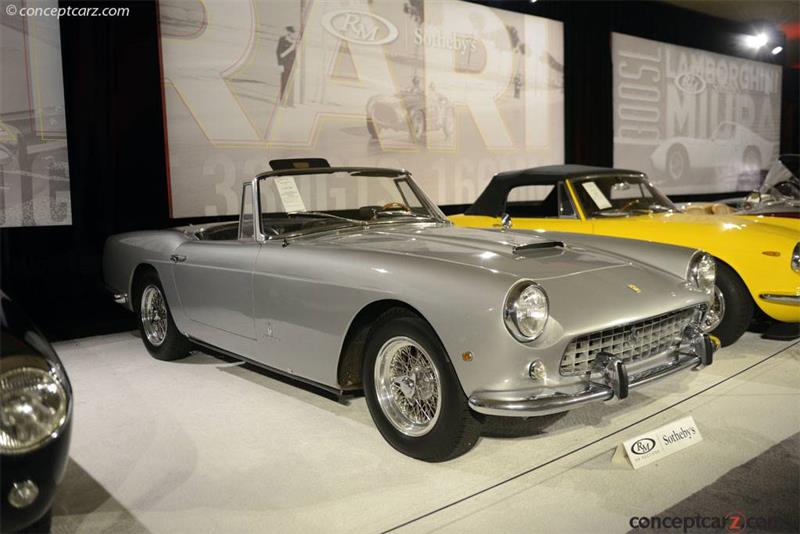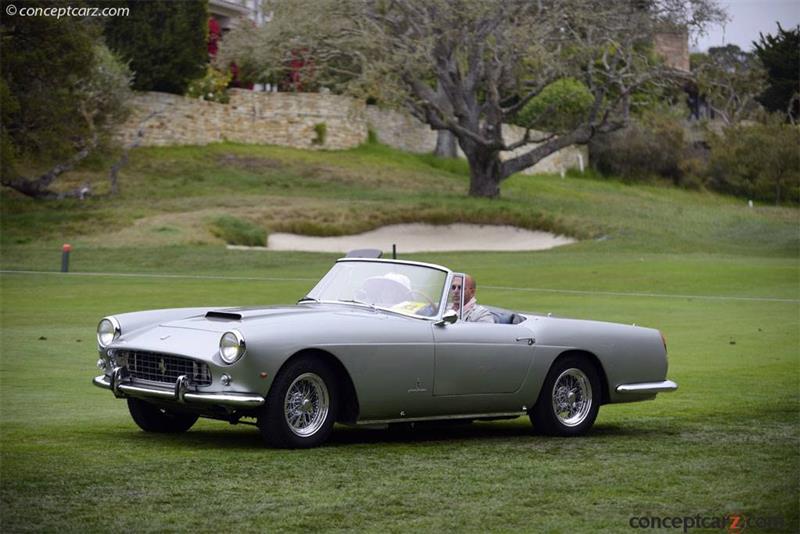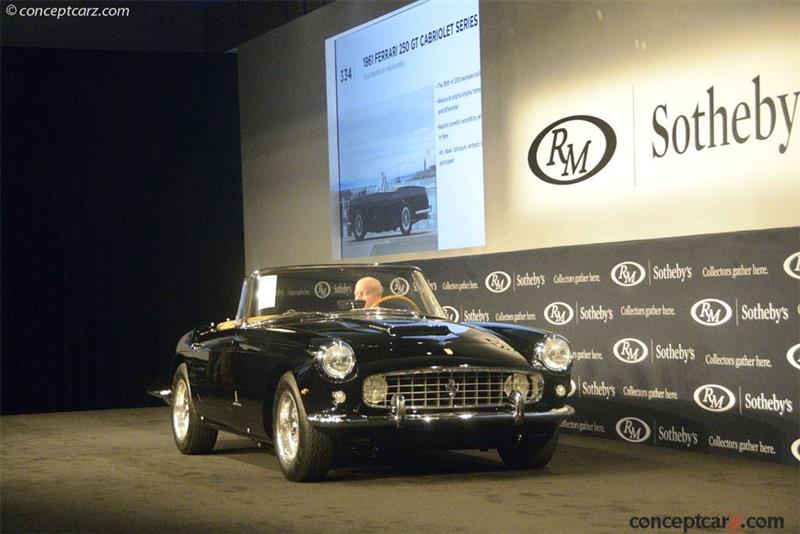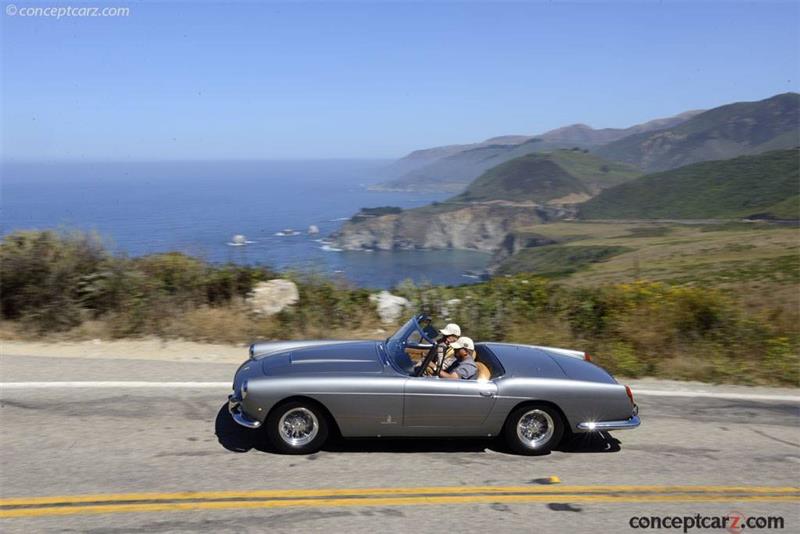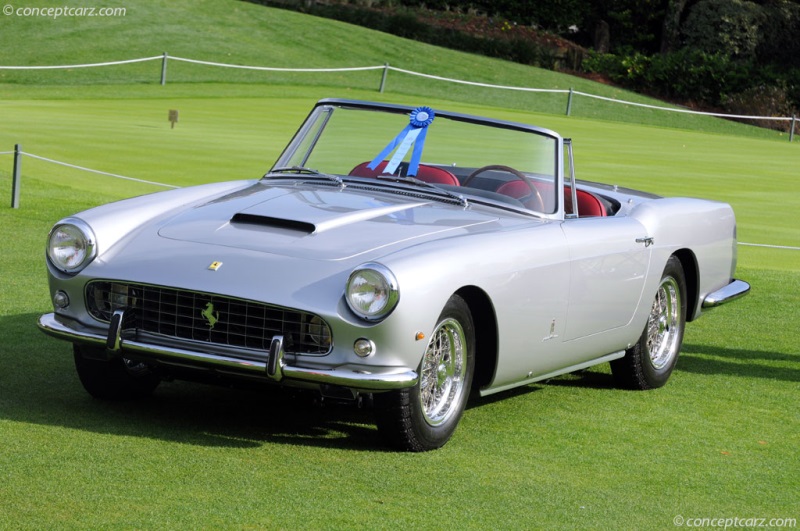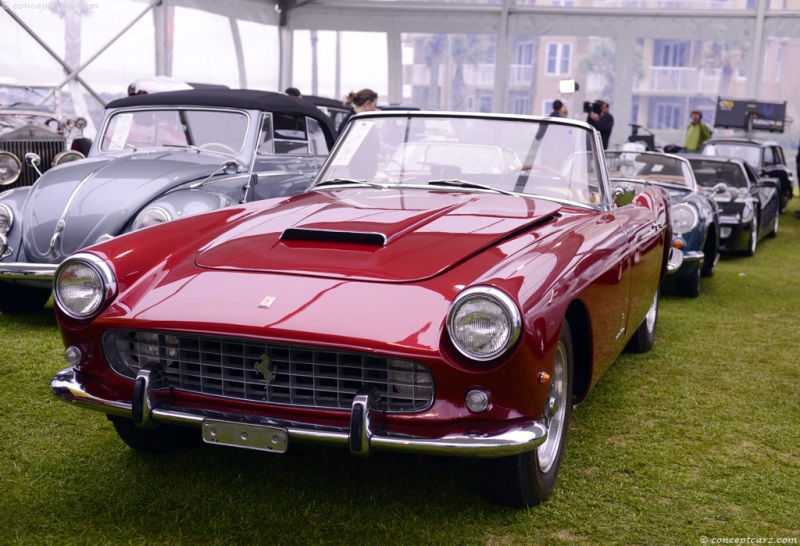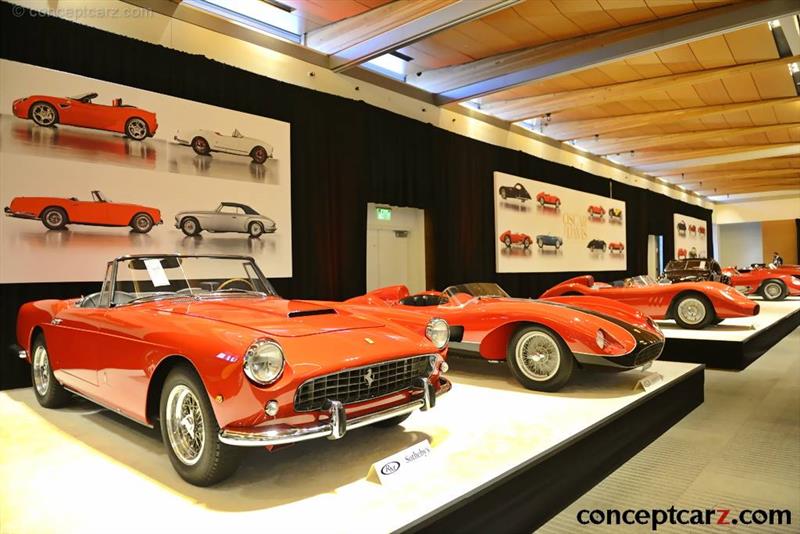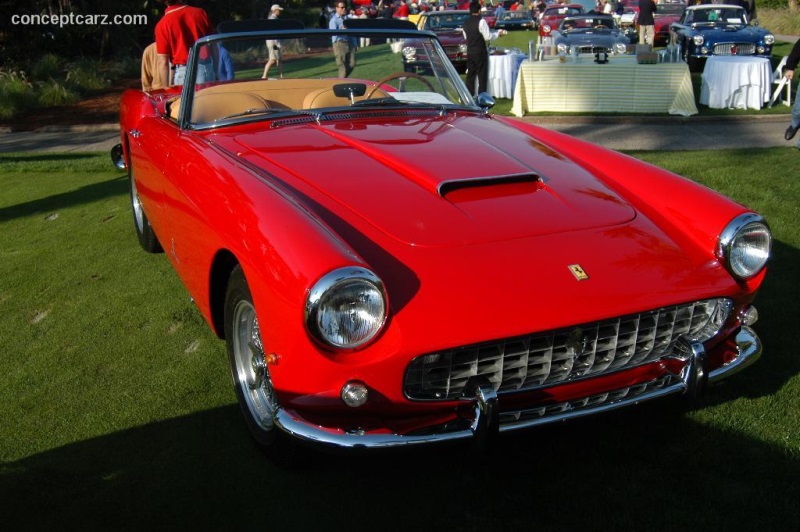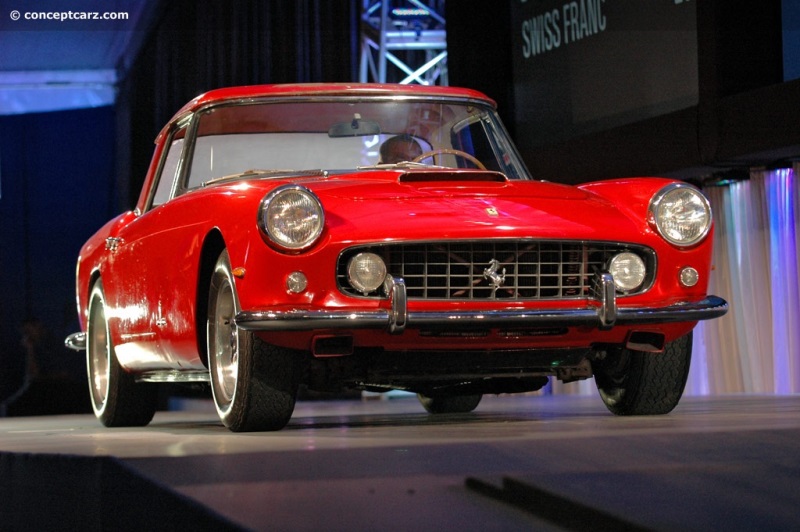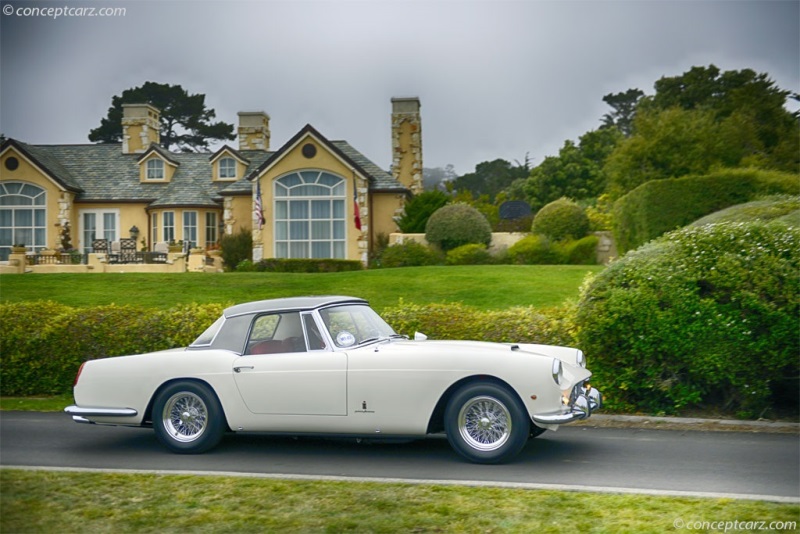The 250 Series of Ferraris were underpinned by Le Man's winners and the grand touring cars from the company's past. It followed the company's basic construction formula and was powered by a high-revving V-12 engine. Produced in both LWB and SWB forms, it became the first 'production' Ferrari. 
Cabriolet
Chassis #: 2489 GT
Engine #: 2489 GT
View info and history
Auction entries : 3By this point in history, road car production was no longer a sideline for Ferrari and had become vitally important to the company's future stability. The 250 series, Ferrari's first volume-produced model, was critically important to the company's prosperity, beginning with the 250 Europe, built from 1953 to 1954 with fewer than 20 examples constructed. Prior to the Europa, Ferrari had built road-going convertibles and coupes in small numbers, usually to special and specific customer orders. They were built atop a sports-racing chassis and often clothed by Vignale and Ghia of Turin, and Touring of Milan. There was no attempt to standardize series production and no two cars were alike.Vignale had been Ferrari's most popular carrozzeria but with the introduction of the 250 Europa, Pinin Farina (later 'Pininfarina') became Ferrari's number one choice, clothing no fewer than 48 of the 53 Europa and Europa GTs. Experimentation led to a new Ferrari 250GT road car wearing Pinin Farina coachwork publicly displayed at the Geneva Salon in March of 1956. At the time, the Torinese carrozzeria was unable to handle the production workload, resulting in production being entrusted to Carrozzeria Boano after Pinin Farina had completed a handful of prototypes.The start of true series production began with a Pininfarina 'notchback' Coupe on the 250GT chassis, produced from 1958 to 1960 beginning with the sequence '0841' to '2081', with 350 examples built. The cars were still tailored to individual customer's requests and a handful of show cars and 'specials' were also built on the 250GT chassis.
Cabriolet
Chassis #: 3093GT
Engine #: 3093GT
View info and history
Auction entries : 1During the 250GT production, a number of significant developments occurred, including the original 128C 3.0-liter engine being replaced by the twin-distributor 128D, later superseded in 1960 by the outside-plug 128F engine which introduced six separate ports instead of the prior Siamesed inlets. Four-wheel disc brakes arrived late in1 959 and a four-speed-plus-overdrive gearbox was added a year later.Series production of the 250GT Cabriolet commenced in July 1957 and approximately 40 Series I Pininfarina-styled examples were completed before the introduction of the Series II in 1959. There was confusion between the Cabriolet and the California Spyder which prompted Farina to separate the two by further defining the Cabriolet as a semi-luxurious grand touring car with more soundproofing, more comfortable interior appointments, and more refined styling. The Series II also improved on its predecessor's mechanical components with running changes that included a switch to disc brakes (by 1960) and telescopic shock absorbers, twin distributors and redesigned cylinder heads with spark plugs relocated to the outside. Ferrari's 2,600-mm oval tube chassis was fitted with independent front suspension by unequal A-arms, coil springs, and telescopic shocks. In the back was a live axle located by semi-elliptic springs and twin parallel trailing arms also with telescopic dampers. Additionally, the front received an anti-sway bar. Alloy-rimmed Borrani road wheels usually fitted with Dunlop, Englebert, or Pirelli tires were placed at all four corners. The four-speed all-synchro transmission had an electrically operated 28.2% overdrive motivated by a large single dry-plate clutch. The Series II cars were powered by the latest, 240-horsepower Tipo 128F V12 engine with outside sparkplugs, coil valve springs, and twelve-port cylinder heads.
Cabriolet
Chassis #: 1755GT
View info and history
Auction entries : 1The Series II Cabriolets were produced from 1959 through 1962 and about 200 examples of the Pininfarina Series II Cabriolet were built, most of them in standard configuration with open headlamps. It made its debut in 1959 at the Paris Motor Show and brought with it a variety of subtle changes from the first series models. Along with the open headlamps, it was given a slightly more rounded nose, elongated tail lamp lenses, and a wider front and rear track. The interior and trunk received slightly more space.Production of the 250GT of all times exceeded 900 units of which 200 were Series II Cabriolets. They retained the sporting heritage of their predecessors yet were more practical and refined than any previous road-going Ferrari.
by Daniel Vaughan | Sep 2019
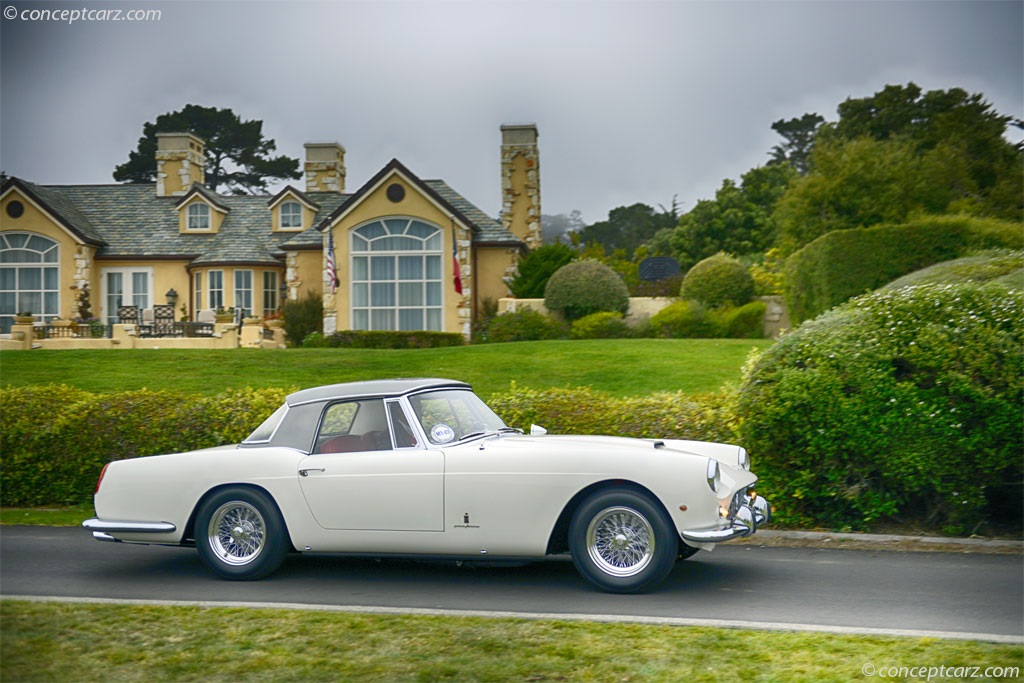
Cabriolet
Chassis #: 2489 GT
Engine #: 2489 GT
View info and history
Auction entries : 3
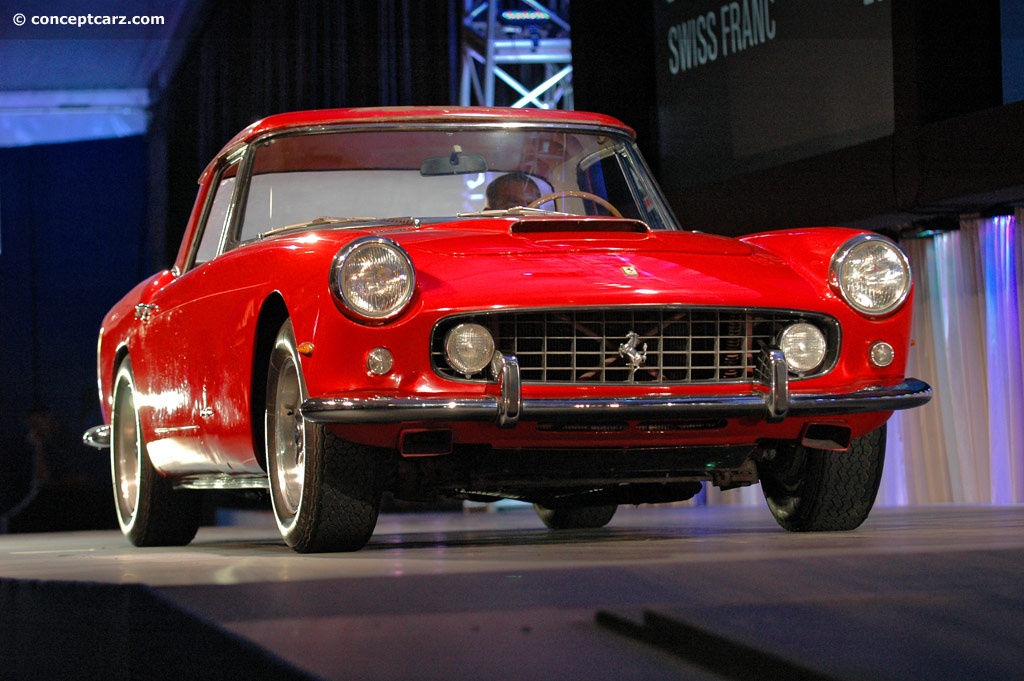
Cabriolet
Chassis #: 3093GT
Engine #: 3093GT
View info and history
Auction entries : 1
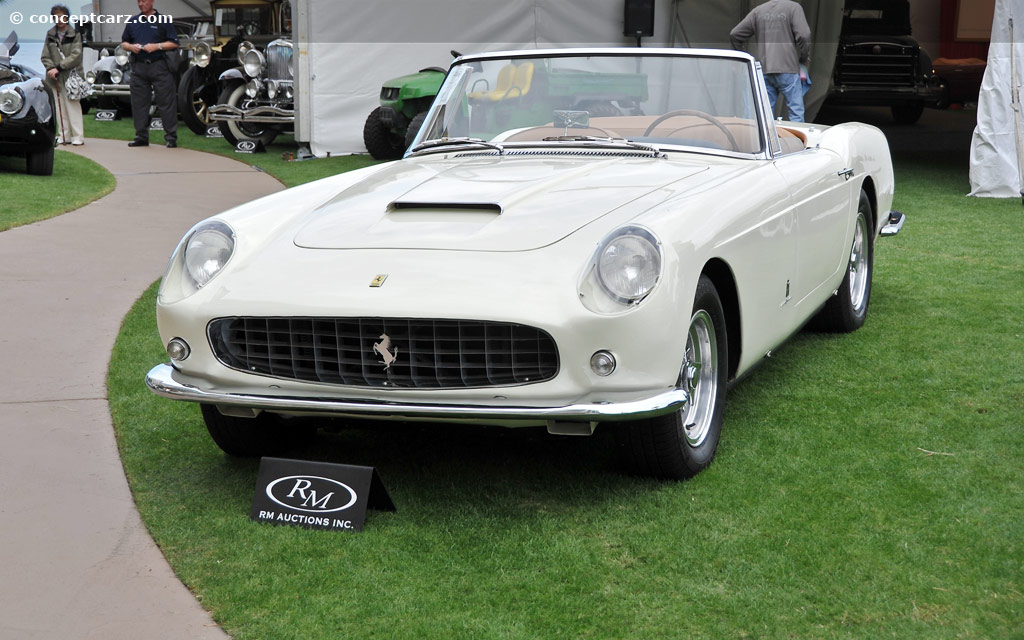
Cabriolet
Chassis #: 1755GT
View info and history
Auction entries : 1
by Daniel Vaughan | Sep 2019
Related Reading : Ferrari 250 GT History
Production of the 250 Series began in 1954 and continued on through the early part of the 1960s. There were numerous variations of the 250 and would ultimately become Ferraris most successful line of vehicles to date. The 250 is also recognized as the first Ferrari to ever receive disc brakes. This did not take place until the end of the 1950s. Also, the 250 was the first four-seater. Ferraris....
Continue Reading >>
Continue Reading >>
Similar Automakers
Similarly Sized Vehicles
from 1961
1961 Ferrari 250 GT Vehicle Profiles
Recent Vehicle Additions
Related Automotive News

Pebble Beach Auctions Online Catalogue Now Live; Historic, Unrestored 1962 Ferrari 250 GT SWB Berlinetta Unveiled as Headlining Car
Gooding %26 Company launches its entire online catalogue for the Pebble Beach Auctions, announces a remarkably original 1962 Ferrari 250 GT SWB Berlinetta along major Italian star cars.
Gooding %26 Company, the official auction house of the Pebble...

1962 Ferrari 250 GT SWB California Spider to Lead Gooding & Company's Amelia Island Auctions Alongside Stable of the Finest Ferraris
The star car of the auctions will be a one-off 1962 Ferrari 250 GT SWB California Spider, joined by a 250 GT Tour de France Berlinetta, a 250 MM Vignale Spider, and other examples of Maranellos finest models.
Leading international auction...

Blue-Chip Classics and Legendary 50s and 60s Sports Cars Added to Gooding & Company's Amelia Island Auction
Gooding %26 Company is revving up for its upcoming Amelia Island Auction with a stellar lineup of offerings. The auction house today announced yet another spectacular group of consignments, consisting of iconic sports and racing cars from the 1950s and...

1938 Mercedes-Benz 540K Autobahn Kurier Named Best of Show at the 70th Pebble Beach Concours d'Elegance
Long recognized as a superlative showcase of automotive history, the Pebble Beach Concours dElegance made history of its own at the culmination of its 70th celebration a total of 38 former Best of Show cars were on hand to welcome a new winner to their...

Celebrity Owned 1963 Ferrari 250GT Lusso Set to Take Center Stage at Russo and Steele Monterey 2015!
Scottsdale, Arizona (April 15, 2015) – By the early 1960s, Ferraris racing and street cars began to diverge in basic essence, with the Scuderias competition cars quickly becoming more specialized and the road cars reflecting the growing demand...























